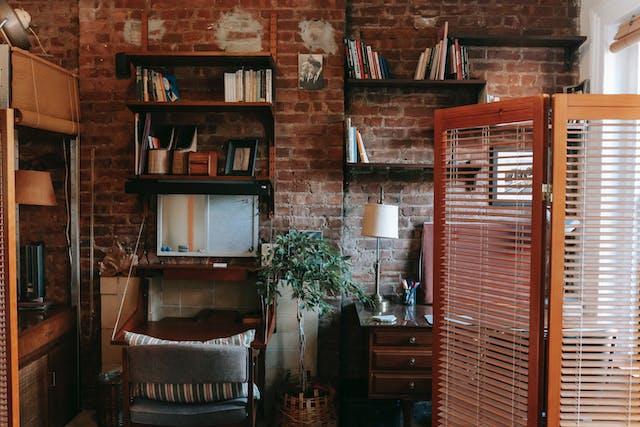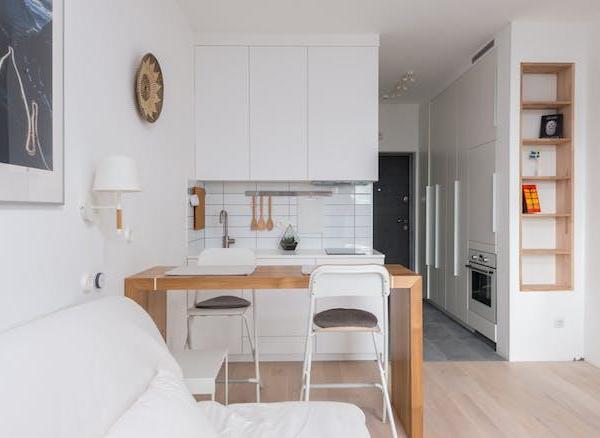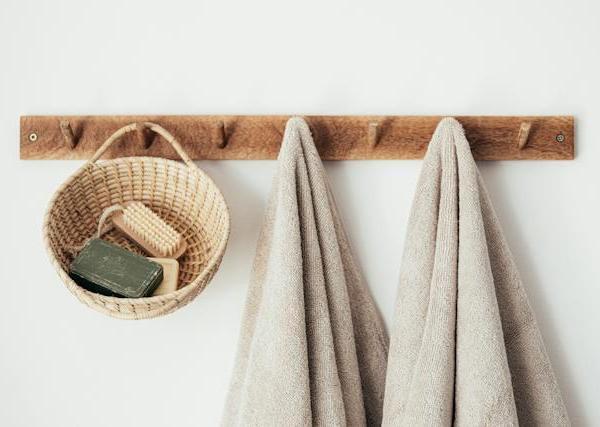Upcycling and Repurposing:
Upcycling and repurposing involve finding creative ways to give new life to old or discarded items. This sustainable home decor trend not only reduces waste but also adds a unique and personal touch to your living space. For instance, you can repurpose old wooden pallets into stylish and functional coffee tables, transform vintage suitcases into storage solutions or turn wine bottles into decorative vases. The possibilities are endless, and by upcycling, you can showcase your creativity while reducing your environmental footprint.Natural and Organic Materials:
Incorporating natural and organic materials into your home decor not only promotes sustainability but also adds a touch of warmth and authenticity. Opt for furniture made from renewable resources like bamboo, which is not only durable but also grows quickly, reducing deforestation. Cork is another sustainable option, as it is harvested from the bark of cork oak trees without harming them. Reclaimed wood, sourced from old buildings or furniture, adds character and history to your home. When it comes to textiles, choosing organic cotton, which is grown without the use of harmful pesticides, ensures a healthier and more sustainable choice. Linen, made from flax fibers, is also a sustainable option, as it requires less water and pesticides during cultivation.Energy-Efficient Lighting:
Switching to energy-efficient lighting is an easy and effective way to reduce your environmental impact. LED (Light Emitting Diode) and CFL (Compact Fluorescent Lamp) bulbs consume significantly less energy than traditional incandescent bulbs, thereby lowering your electricity usage and utility bills. Additionally, LED and CFL bulbs have a longer lifespan, reducing the frequency of bulb replacements. By maximizing the use of natural light through strategic placement of mirrors, choosing sheer curtains, or installing skylights, you can further minimize the need for artificial lighting during the day, resulting in additional energy savings.Low VOC and Non-Toxic Paints:
Traditional paints often contain volatile organic compounds (VOCs), which release harmful gases into the air and contribute to indoor air pollution. Opting for low VOC or zero VOC paints is a sustainable choice that promotes a healthier living environment. These paints have reduced levels of toxic chemicals, making them safer for your family and the environment. Many paint brands now offer a wide range of colors and finishes in eco-friendly options, so you can still achieve the desired aesthetic while prioritizing sustainability.Sustainable Textiles:
Choosing sustainable textiles for your home decor helps reduce the environmental impact of the textile industry, one of the largest contributors to pollution and waste. Organic cotton is grown without the use of harmful pesticides and synthetic fertilizers, making it a more sustainable choice. Hemp is another eco-friendly option, as it requires less water and pesticides during cultivation. Linen, made from flax fibers, is also a sustainable material due to its durability and natural properties. Bamboo fabric is gaining popularity due to its rapid growth and minimal need for water and pesticides. Additionally, purchasing products made from recycled or upcycled textiles, such as rugs or cushions, helps divert waste from landfills and promotes a circular economy.Indoor Plants and Biophilic Design:
Incorporating indoor plants and embracing biophilic design principles can transform your home into a sanctuary that promotes well-being and connectivity with nature. Indoor plants not only add aesthetic appeal but also improve air quality by filtering out toxins and releasing oxygen. They create a serene and calming atmosphere, reducing stress and enhancing overall well-being. Consider adding a variety of plants, such as succulents, ferns, or peace lilies, to different areas of your home, including shelves, windowsills, or hanging planters. Biophilic design goes beyond plants and involves incorporating natural elements and patterns into your home decor. Wooden furniture or accents, nature-inspired artwork, or stone finishes can help create a connection with the natural world, fostering a sense of tranquility and harmony within your living space.By embracing sustainable and eco-friendly home decor trends, you can create a more environmentally conscious living environment without compromising on style and functionality. Upcycling and repurposing give new life to old items while showcasing your creativity. Choosing natural and organic materials adds warmth and authenticity to your home while reducing your ecological footprint. Energy-efficient lighting and low VOC paints minimize energy consumption and improve indoor air quality. Sustainable textiles help reduce pollution and waste in the textile industry. Lastly, incorporating indoor plants and biophilic design principles bring the calming and refreshing elements of nature into your living space. By exploring these trends and making conscious choices, you can transform your home into a sustainable haven that reflects your values and contributes to a greener planet.



